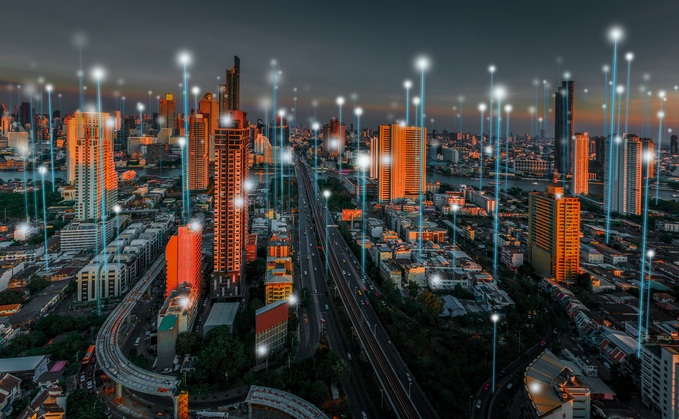
Partner Insight: Now is a crucial time to take action and support the progress of the Virtual Energy System in digitising Britain's energy management, according to ESO
When it comes to transformation in the energy system, the race has already begun. The Virtual Energy System, a response to calls from leaders across the sector for a digitalised replica of the UK's energy landscape, aims to help energy decision makers better respond to the growing complexities of the sector.
It's also a reflection of the industry's desire to innovate. In fact, the energy sector has always been an early adopter of digital technologies. Following the Energy Digitalisation Taskforce's (EDiT) report calling for a digitalised energy system, the UK government has launched a 'digital spine' feasibility study working to develop wider policy agendas for the digitalisation of the energy system, of which the Virtual Energy System is a crucial component.
The energy system itself is currently operated primarily on bilateral exchanges following industry codes - it's built on the sharing of limited data in a way that will need to evolve in order to keep pace with the level of automation and transformation happening across the industry.
That's why a digitalised energy system is so important. The Virtual Energy System is a world-first, right-time digital replica of our entire energy landscape, working in parallel to the physical system to improve simulation, forecasting, and decision-making abilities.
This improved decision-making sits at the heart of Britain's future energy system. So how can the Virtual Energy System help take us there?
Increasing visibility across the system
Like with any system, for the entire industry to understand the rules of operation and benefit from a digitalised system, we all need to be speaking the same language.
This is a challenge when the industry includes a huge variety of organisations, from power station operators to consumers. These different actors all have a diverse range of standards and processes with regards to their data. For them to interact and benefit from the Virtual Energy System, we need a single defined set of standards so we can all publish and access data in the same way.
That's why one of the six priority factors, identified by ESO to help build the Virtual Energy System, focuses on increasing visibility and enabling sharing across the energy industry. Data owners have a key role to play, ensuring data shareability regardless of underlying protocols or individual systems.
The possibilities unlocked by a singular set of standards is enormous. According to the International Energy Agency (IEA), "the greatest transformational potential for digitalisation in energy is its ability to break down boundaries between energy sectors, increasing flexibility and enabling integration across entire systems."
But just evolving technical standards won't create the change needed. We also need a cultural shift where stakeholders are encouraged to begin the process of enabling this sharing. This is key to breaking down siloes and unlocking the potential of data that's already available.
That's where the industry needs to act: to get onboard with the momentum of the Virtual Energy System now to ensure this culture can be built from the ground up.
Optimising decision making
The Virtual Energy System is already helping to optimise decision-making in the energy industry. One use case is modelling consumer data to help encourage consumers to reshape their energy demand: it's called CrowdFlex.
Now in its Beta phase, CrowdFlex will develop a domestic flexibility forecasting model for the ESO, interconnected with domestic demand models developed by Flexibility Service Providers (FSPs) and collect data for these models from two types of flexibility trials.
Armed with this data, CrowdFlex will enable the energy industry to better model and forecast future demand (and the flexibility available within that demand) from consumers. Following the Beta phase, these interconnected models will ensure operators are better placed to manage supply and demand changes across the grid through a clearer understanding of when and where energy is needed.
CrowdFlex will demonstrate the central value of the Virtual Energy System - it relies on the transparent, efficient, and secure sharing of data. Armed with this data, the programme helps operators have a greater understanding of the flexibility of domestic demand, meaning they can make more effective decisions to balance the grid.
This enhanced decision-making will ultimately lower costs for consumers and reduce stress across the network. And it's just one example of how digitalisation, through the Virtual Energy System, can build a more efficient and effective energy system.
Forecasting the future
One of the primary goals of the Virtual Energy System is to accelerate the energy industry's efforts towards net-zero.
By giving operators better oversight of fluctuating supply and demand, it helps operators plan future investments with more confidence and get more renewable energy onto the grid. In fact, the IEA estimates that digitally enabled demand response could reduce the curtailment of variable renewable energy systems by more than 25 per cent by 2030.
The rate of digitalisation across the energy system isn't slowing down. Grid-related investment in digital technologies has grown by over 50 per cent since 2015 and is expected to reach 19 per cent of total grid investment in 2023.
Now is a crucial time to take action and support the progress of the Virtual Energy System in digitising Britain's energy management. Take the time to learn more about how you can share your data and optimise your decision-making, so you can be ready for the future.
Want to get started?
This article is sponsored by ESO.






